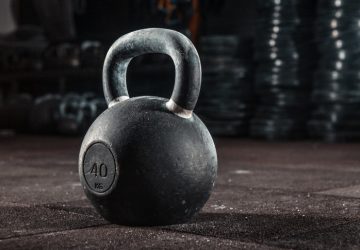- CONTACT US
- AFS
- Business
- Bussiness
- Car
- Career
- Celebrity
- Digital Products
- Education
- Entertainment
- Fashion
- Film
- Food
- Fun
- Games
- General Health
- Health
- Health Awareness
- Healthy
- Healthy Lifestyle
- History Facts
- Household Appliances
- Internet
- Investment
- Law
- Lifestyle
- Loans&Mortgages
- Luxury Life Style
- movie
- Music
- Nature
- News
- Opinion
- Pet
- Plant
- Politics
- Recommends
- Science
- Self-care
- services
- Smart Phone
- Sports
- Style
- Technology
- tire
- Travel
- US
- World

LAS VEGAS — The middle-aged woman wearing a Ferrari hat at gate C60 in the Denver Airport altered the course of my weekend. As we were commiserating about the Southwest Airlines seating system, a man approached her husband to ask who he was rooting for to win the Las Vegas Grand Prix, the Formula One race to which most of the weary travelers around me were headed.
“She’s into it. I inherited it from her,” the man explained, gesturing to his wife. She turned quickly to the stranger, explaining that this was her fifth grand prix. Her name is Carol; she’s obviously a Ferrari stan, and Lewis Hamilton, perhaps the most instantly recognizable F1 driver, is her guy. She fanned herself a bit with her hand as she said his name. She urged me to join her in Ferrari standom. The cars are fast, the guys are hot and everyone looks good in red.
Sure, I thought. I could be a Ferrari fan.
I’m vaguely familiar with the funky, single-seat racing sport because I was unexpectedly enchanted by the gooey sentimentality of 2025’s F1: The Movie movie starring Brad Pitt. I was also aware of another well-known fact: A lot of F1 fans are women. As I headed into the desert for one of the highest-stakes races of the year, I assumed that I’d find some fellow travelers who were gentle and better informed than I, who would adopt me and show me the ropes. I was right — it began with Carol before I even landed in Vegas.
According to the 2025 Global F1 Fan Survey, the sport’s under-35 and female audiences have grown by over 50% in the last five years, powered by its growing popularity in the U.S. and China. Since 2018, the percentage of women fans has jumped from 37% to 41%, and the fastest-growing audience is women ages 16 to 24. It’s a model that other sports franchises, from the NFL to the MLS, are vying to replicate.
Most of the women I spoke with during race weekend said they fell in love with the sport because of Netflix's Drive to Survive series, which turns the athletes of F1 into reality TV personalities, showcasing their attitudes and relationships as well as their talent.
“There's always a new level to learn about — the engineering side, or the marketing side, or the glitz and glamour and petty drama of it all,” Alexandra Zigrang, the founder of Off To The Races, a travel company that organizes F1 trips, told me. “You can really decide how you want to engage with the fandom. That's what really appealed to women … there's no right or wrong way to be a fan. You can meet it on your own terms.”
It’s OK if your gateway drug for F1 is a compelling driver, the outrageous fashion showcased by their wives and girlfriends or the theatrical television storylines. It’s OK if you want to go to a race to see the city that surrounds it, to dine luxuriously or to try to spot Beyoncé, who set the internet ablaze when she made an appearance dripping in F1 swag on race day. F1 is one of the first sports to thoroughly capitalize on female fandom, and it did it by recognizing that fierce athleticism and glamour can go hand-in-hand and by being unabashed in its embrace of both.
It’s basically a reality show
After dropping off my bags at the Aria Resort & Casino, my first stop was a pop-up store where I spent an ungodly amount of money on a Ferrari coat that I prayed would keep me insulated in the unsettling, drizzly cold of November in the desert. I hadn’t felt so profoundly that I had just declared my allegiance since pledging a sorority in college; I was now a Ferrari fan, and I’d be rooting for Charles Leclerc because he looks a little like Timothée Chalamet (his legendary teammate, Hamilton, seemed too obvious).
As I mixed and mingled with more young female F1 fans, I wondered if being motivated by thirst was something to feel guilty about.
Katie Lockhart, a fellow journalist and content creator who’s been to many an F1 Grand Prix across the globe, assured me that I didn’t have to tiptoe around my truth — everyone pretty much agrees that all the drivers are hot. She also explained to me, without an ounce of condescension, how the engineering of certain cars impacts the heat of their tires and how that impacts their speed.
I was now a Ferrari fan, and I’d be rooting for Charles Leclerc because he looks a little like Timothée Chalamet.
Another fan showed me dozens of photos of Fernando Alonso, a driver for Aston Martin, that she had curated on a Pinterest board. This led to a broader group conversation among a gaggle of women: Max Verstappen is an a**hole. Lance Stroll is a nepo baby. Lando Norris’s relationship status is a little too hard to decipher. The enthusiasm and relationship dynamics at play felt more like a debate about Vanderpump Rules than something on ESPN.
With other sports, fandom is inherited from family members or picked up from college affiliation or geographical proximity. F1 is global — teams are largely based in the U.K. and Italy, and teams are owned by globally known brands like Ferrari, Mercedes, McLaren and Red Bull. You have to find your own way in.
But once you’re in, it’s easy to go all the way. There are only 10 teams that each have 2 drivers, so there are only 20 faces and stories to learn. It really is more like the cast of a TV show, which makes it easy to get attached to your favorites. I myself have opened Leclerc’s Wikipedia page 48 times in three days.
It’s the height of luxury
Over her six years of fandom, Zigrang gleaned that the sport’s female enthusiasts were driving its popularity online on TikTok, Instagram and Tumblr, but most of the women she saw at races were there with men. She wanted to see more female-centric communities, so she founded Off to the Races, which organizes group trips for race weekends, catering primarily to women.
“I was like, ‘Where are all the women?’” Zigrang remembers thinking. “On one hand, the bathroom lines are short. ... I know they are fans, but why isn't this translating to in-person attendance?”
When Zigrang planned her own trips to races at glamorous vacation destinations like Las Vegas, Miami, Abu Dhabi and Monaco, she filled her itinerary with trendy restaurants, cultural hot spots and wellness indulgences. OTTR follows the same model, and 90% of the people who take part are solo travelers. She sets them all up in a WhatsApp group several weeks in advance so they can get to know each other before the big cocktail dinner, where they immediately “start yapping like they've known each other 5,000 years.”
Indeed, decadence is part of the F1 experience. For my time at the Las Vegas Grand Prix, I was a guest of the Bellagio Fountain Club, a swanky structure temporarily set up for race weekend between the gorgeous fountain in front of one of the city’s finest hotels and the main straightaway of the track. Some of the most famous chefs in the world craft gourmet dishes served there, and guests can devour them at linen-clad tables inside or overlooking the track outside.
Over the course of 72 hours, I discovered that I didn’t even have the frame of reference from my 31 years of existence to imagine how fancy something could be.
“Caviar again?” I let slip to a fellow dinner patron before swelling with self-hatred. To be fair, I’d already eaten a tiny taco filled with it, slathered it on a lobster croquette and a potato croissant and licked it from the back of my own hand over the course of 24 hours.
Still, in the kitsch capital of the world, you can pay thousands of dollars for the best F1 seat humanly possible and still find your skin glowing green from an ad for Monster Energy.
My camera roll holds a smorgasbord of some of the blurriest photos of the fanciest foods ever crafted, thanks to an itinerary designed specifically by the fine folks at the Bellagio to pack my weekend with the finer things. I slurped wasabi scallops that were prepared by Top Chef winner Brooke Williamson at Michael Mina’s Bellagio restaurant, ate lobster ramen at Momofuku before gossiping with David Chang about his podcast, had Peking duck off Versace plates at Jasmine and bit a piece off of a fancy dessert shaped like a Ferrari under the big top at Ristorante Cavallino’s takeover at Le Cirque, surrounded by portraits of clowns.
Still, in the kitsch capital of the world, you can pay thousands of dollars for the best F1 seat humanly possible and still find your skin glowing green from an ad for Monster Energy. That’s part of the appeal, of course — what’s better than caviar paired with a Red Bull-branded margarita, all intermingled with the smell of burnt rubber?
During the three race events I attended — practice, a qualifying round and the grand prix itself — I opted out of the Red Bull-branded headphones, deciding instead to take in every “nyoom” sound blasted into my ears. For the record, the women’s bathroom line was very long.
This is part of the appeal of F1 for many people — you go to a city with immense amounts of swag, and you indulge until it’s time to watch cars go really fast in a lap 50ish times. You mingle with influencers, celebrities and WAGs dripping in luxury fashion, whose mere appearances make headlines the following day. (My non-F1 friends who heard I was at the race all had the same question: Did I see Beyoncé? No, but I did see DJ Pauly D from Jersey Shore.)
True representation and the future of the fandom
There are plenty of social media posts lamenting the presence of influencers at F1 events, who are accused of taking up spaces that should go to true fans. But influencers are now at every high-wattage cultural event, from Coachella to film festivals, and they’re serving as walking billboards for a sport that’s actively growing. By showing up and posting up a storm, they’re influencing perception of what an F1 fan can look like, broadening the reach of the sport and introducing wider audiences to the joy of fandom.
Former Canadian tennis player Ayan Broomfield, who is also the girlfriend of American tennis star Frances Tiafoe, has long been an advocate for creating spaces for women of color in tennis, and over the weekend, she brought that initiative, Ayan’s Aces, to F1.
“Any sport that has a high percentage of female fans is a great thing, but I wanted to make sure that we were not only giving women a platform, but women of color. That’s what Ayan’s Aces is all about,” she tells Yahoo. “If I can help bring girls to these events and really show out, I’m going to do so.”
Marissa Tandon, a Los Angeles-based content creator, has been an F1 fan since middle school, though she’s long followed all sorts of sports. She posts educational and personal stories on her Instagram and TikTok that help people connect to F1 “in a way that doesn’t feel intimidating,” she tells Yahoo. I wanted to know why F1’s female fanbase seemed so much more talked-about than other sports.
“I think the female fanbase is there for every sport, and always has been — the Formula 1 female fanbase is just becoming very visible on a global scale as it becomes a bit more integrated into pop culture,” she says. “Social media has been a huge part of that, as has Drive to Survive, and teams really starting to open up to working with creators.”
Tandon still feels pushback as a female fan online sometimes, but that just inspires her to keep trying to change public perception. She’d love to see more people — especially within the institution of F1 — talking about F1 Academy, which is a female-only racing championship.
“If we could see more of the crossover of support from the NBA to the WNBA, from the NHL to the PWHL, MLS to NWSL, and from the MLB to the new WPBL next year, that would make a huge difference,” she says. “You’re not just saying we want women to watch our league; you’re saying that women belong in this space, both playing and in the stands.”
In the final moments of the Las Vegas Grand Prix, I joined a handful of other journalists at the window to capture precious, close-up footage of whichever three drivers took the top three spots at the race as they arrived in a pink Lego Cadillac. As we clung to the exclusive spot, a gaggle of teenagers lined up to my right. They pushed the most diminutive of them — a teenage girl — to the front next to me.
“Let her go to the front,” one broccoli-haired boy said. “She’s the shortest.”
“I’m also the smartest,” she retorted.
Her gaze stayed fixed on the window as the men around her slung more F1 lingo than I’d been able to learn in three days — I remember the words “grand chelem,” “scrutineering” and “safety car.” Now part of the F1 sisterhood, it's my duty to evangelize this world of fast cars, hot guys and unlimited luxury to as many gals as possible. I asked her how she felt about Leclerc.
LATEST POSTS
- 1
 Discussion on deployment of foreign troops ongoing, two sources tell 'Post'
Discussion on deployment of foreign troops ongoing, two sources tell 'Post' - 2
 'Stranger Things' character guide: The nerds, the newcomers and the rest of the Season 5 cast
'Stranger Things' character guide: The nerds, the newcomers and the rest of the Season 5 cast - 3
 Qatar, Ireland accuse Israel of using chemical weapons on Palestinians, demand watchdog probe use
Qatar, Ireland accuse Israel of using chemical weapons on Palestinians, demand watchdog probe use - 4
 How to watch the 2025 Macy's Thanksgiving Day Parade for free
How to watch the 2025 Macy's Thanksgiving Day Parade for free - 5
 Young Muslims in Germany feel left out of Mideast debate, experts say
Young Muslims in Germany feel left out of Mideast debate, experts say
 4 Home Rec center Hardware Decisions for Little Spaces
4 Home Rec center Hardware Decisions for Little Spaces Change Your Physical make-up: Compelling Activities for Muscle Building
Change Your Physical make-up: Compelling Activities for Muscle Building 10 Activities to Lift Your Consume and Bust Your Stomach
10 Activities to Lift Your Consume and Bust Your Stomach Holiday rom-com meets football fever — are Hallmark and NFL fans secretly the same audience?
Holiday rom-com meets football fever — are Hallmark and NFL fans secretly the same audience? Must-Have Wellness Gear: What to Purchase for Successful Exercises
Must-Have Wellness Gear: What to Purchase for Successful Exercises How to get tickets for AC/DC's 2026 'Power Up' Tour
How to get tickets for AC/DC's 2026 'Power Up' Tour Nitty gritty Manual for Picking Agreeable Tennis shoes
Nitty gritty Manual for Picking Agreeable Tennis shoes Consume Fat Quick: 10 Demonstrated Activities for Ideal Outcomes
Consume Fat Quick: 10 Demonstrated Activities for Ideal Outcomes Last Christmas, 3 million viewers watched a Chiefs love story — will Bills fans fall just as hard this year?
Last Christmas, 3 million viewers watched a Chiefs love story — will Bills fans fall just as hard this year?












